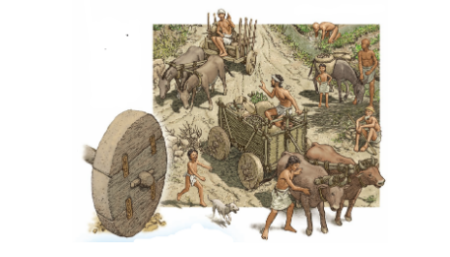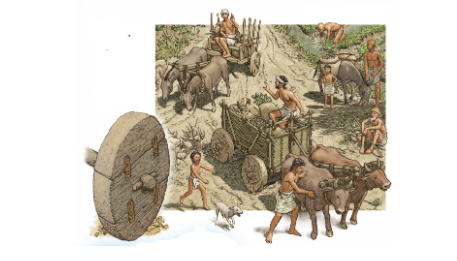Discover how the ancient Sumerians increased food production with ingenious methods such as irrigation systems, crop rotation, and terrace farming. Learn from their innovative techniques and enhance your own agricultural practices.
How Did the Sumerians Increase Food Production?

The Sumerians made significant advancements in agriculture, which enabled them to increase food production in several key ways. Their innovations were crucial for sustaining their civilization, which thrived in the fertile region of Mesopotamia, known as the “Cradle of Civilization.” Here are some of the methods they used:
- Irrigation Systems: The Sumerians developed complex irrigation systems to manage the waters of the Tigris and Euphrates rivers, which flowed through their lands. By constructing canals, dikes, dams, and reservoirs, they were able to control the flow of water, bringing it to fields that would otherwise be too dry for cultivation. This allowed them to grow crops even in areas that were not directly adjacent to the rivers.
- Plow Invention: The Sumerians are credited with inventing the plow, which greatly improved the efficiency of farming. The plow allowed them to till the soil more deeply and more quickly than before, aerating the soil and preparing it for seeding. This innovation made it possible to cultivate larger areas of land.
- Crop Rotation: They practiced an early form of crop rotation, alternating the types of crops grown in an area over time. This agricultural technique helped to reduce soil depletion, as different crops have different nutrient needs and pest relationships. By rotating crops, the Sumerians could maintain the fertility of their fields and reduce the buildup of pests and diseases.
- Domestication of Animals: The Sumerians domesticated animals such as sheep, goats, and cattle, which provided them with meat, milk, and wool. These animals were also used for labor, including plowing and transport, which further supported agricultural activities.
- Seed Improvement: There is evidence to suggest that the Sumerians engaged in early forms of plant breeding, selecting seeds from the best-performing plants for future planting. This selective breeding would have gradually improved crop yields and resilience over time.
- Agricultural Tools and Techniques: The development of various agricultural tools and techniques, such as sickles made of flint or later metals, helped in harvesting crops more efficiently. These tools increased productivity and reduced the labor required for agricultural activities.
- Urban Planning and Management: The organization of Sumerian cities and the surrounding agricultural lands was highly efficient, with a focus on maximizing agricultural output to support a growing urban population. The management of agricultural surplus was also crucial for sustaining the urban centers and facilitating trade.
These innovations in agriculture were crucial for the Sumerians, enabling them to support a dense population and develop one of the world’s first urban civilizations. The techniques they developed laid the foundation for future agricultural practices in many civilizations that followed.
Conclusion
The Sumerians’ innovative agricultural techniques and resourcefulness allowed them to expand their food production despite the challenges they faced. Through the implementation of irrigation systems, plow agriculture, crop rotation, terrace farming, animal domestication, and water management, they established a foundation for sustainable food production that was unparalleled in their time. The Sumerians’ methods serve as a testament to their ingenuity and their ability to adapt to their environment, leaving a lasting legacy in the realm of food production.
